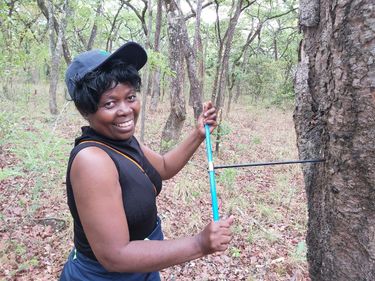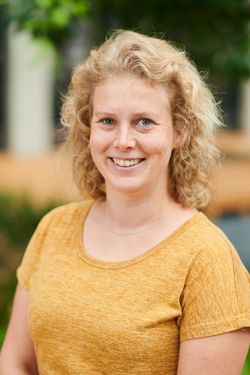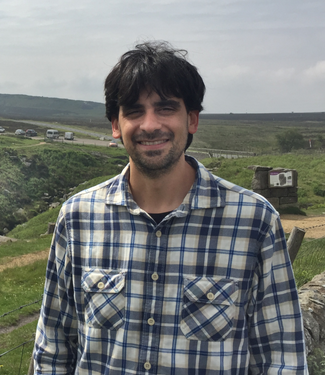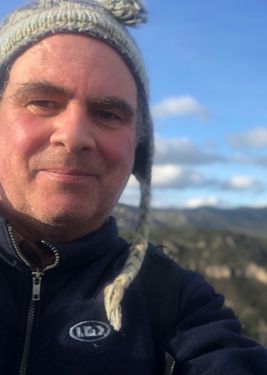
Sessions in which Eileen Kuhl participates
Wednesday 29 June, 2022
Information garnered from historical timbers and wooden artifacts (e.g. houses, barns, ships) can greatly enhance our understanding of human, ecological, and climate history, especially in regions where few old-growth forests and trees remain, tree longevity is relatively short (less than 300-400 years), and environmental conditions break down wood rather quickly, like in mesic to wet regions Over the last decade plus, the application of tree-ring techniques on woo...
Dendroclimatological reconstructions are often extended into the past with wood from historical buildings. However, the varying, though frequently unknown origin of timbers not only affects the growth rate but also the climate response of individual tree-ring samples. We tested nine supervised machine learning algorithms for the geographical provenancing of 99 historical tree-ring samples. We sampled 143 living larch (Larix decidua Mill) trees at seven sites along an elevational gradient f...
Sessions in which Eileen Kuhl attends
Monday 27 June, 2022
MAIDENiso is a numerical process-based model that allows researchers to simulate the growth of a virtual tree. Using daily meteorological data, the model simulates the physical and physiological processes taking place in the tree and its environment, to produce daily and yearly outputs comparable to dendrological observations. The model has been adapted and used successfully in boreal regions in North America. In an inverse mode, tree-ring obs...
Free, in person and onlineWe will hold a practical, skills-based workshop introducing openDendro -- an open-source framework of the base analytic software tools used in dendrochronology in both the R and Python programming languages. openDendro is a new unified set of tree-ring analysis tools in open-source environments that provides the necessary baseline for dendro...
Meet colleagues and friends in an informal settingFree drinks for all!
Tuesday 28 June, 2022
Africa is faced with a number of challenges including climate change and ecological disturbance due to various anthropogenic activities. These problems adversely affect the forests and also ecosystem services. My appreciation for the forests motivated me to pursure my undergraduate studies in Forestry. I first applied dendrochronology during my PhD research which focused on understanding the climate change vulnerability of the Zambezi teak forests in Zambia. However, lack of research facil...
As of 2020, 56% of the world’s population live in urban areas. These individuals benefit from numerous ecosystem services provided by urban forests, including urban heat island mitigation, energy use reduction, stormwater interception, wildlife and pollinator habitat provision, air pollution removal, and carbon sequestration. Urban greenspaces are also often the most accessible avenue for exposure to the natural environment, providing additional aesthetic, recreati...
Floods and droughts have recently worsened in the Fraser River Basin (FRB), British Columbia, causing significant impacts to western Canadian economy, ecosystems, and societal wellbeing, as well as the costliest natural disaster in the province’s history in 2021. These extreme events present a major management challenge since the FRB is susceptible to unregulated spring flood and summer drought events, even in the same year. Meanwhile observational streamflow datasets are both short and po...
Ring-width (RW) and Blue Intensity (BI) parameters (earlywood - EWB, inverted latewood – LWBinv, and delta - DB) were measured from samples of Araucaria araucana from six sites in northern Patagonia, Argentina. The distance between the most southerly and northerly sites is ca. 130 kms. Despite a much weaker between-tree signal for the BI parameters than RW, principal component analysis identifies a much stronger regional between-site signal for the BI parameters. Split period correlation r...
The Laacher See Eruption (LSE) ranks among Europe’s largest Upper Pleistocene volcanic events. Although its tephra deposits represent an important isochron for the synchronization of proxy archives at the Late Glacial to early Holocene transition, uncertainty in the eruption age has prevailed. Combined analysis of high-precision ring width and radiocarbon measurements from individual rings of trees that were killed during volcanic eruptions and buried by their deposits can provide eruption...
Cyclic outbreaks of the larch budmoth (Zeiraphera griseana, hereafter referred to as LBM) have affected the growth of their larch host trees (Larix decidua) in the European Alps. These regular defoliation events have weakened since the 1980s, likely in response to climate change, but recured in 2018. Here, we investigate the LBM activity along two elevational gradients in the Swiss Alps using tree-ring width (TRW) and maximum latewood density (MXD) measurements from 15 sites between 1,400 ...
Wednesday 29 June, 2022
Dendrochronology is considered one the most precise of all the scientific dating techniques. However, it requires long sequences of tree rings and a master record for both the species and region in question. At the University of Groningen, we have been pioneering a new approach to dating that combines the precision of dendrochronology with the versatility of radiocarbon dating. It relies on the detection of spikes in the annual radiocarbon record, thought to b...
Forty years ago Dr. Tom Yanosky, a research botanist with the US Geological Survey, reported that ash trees growing along the Potomac River contained rings with abnormal wood anatomy caused by flood damage. Dr. Yanosky recommended these rings — which he dubbed “flood rings” — could be used to estimate the date, seasonal timing, and (most importantly) peak stage of past floods. Since that discovery, flood rings have been identified for forested river systems in eastern France, central Canad...
Presentation of all Ameridendro2022 posters.FREE LUNCH FOR ALL ATTENDEES!
This is a mandatory (!) .... and FREE (!!) cocktail & award ceremony (!!!)(in replacement of the Banquet formula)->->->->->->->->->->->->->->->->->->After a great summer day of scientific and urban discoveries in our beloved MTL, we wish to bring together all the AmeriDendro community in one place and congratulate the TRS awardees for their remarkable achievements! -Bonsinsegna award-Fr...
Thursday 30 June, 2022
How old are tropical trees? This fundamental question has long driven the curiosity of laymen and scientists. But only recently, a great number of studies conducted by many brave dendrochronologists resulted in a significant tree-ring-based knowledge that allows us to start accurately estimating tree ages across the globe. As science goes, not only knowing the longevity of tropical trees is essential to understanding forest dynamics and its role in biogeochemical cycles, but one must also ...
In tropical environments of central America, tree-ring forming species are rare to find, especially in areas with pronounced aseasonality, but wood anatomical traits can equally provide important information on species life-histories and response to disturbances. Dating wood anatomical structures remains a crucial task to decipher the ecological information recorded in xylem cellular parameters in absence of defined ring boundaries, particularly to observe the footprint of discrete disturb...
Tree-ring records have been used extensively to reconstruct past streamflow variability. Annually resolved estimates for several centuries prior to observations, and in some cases millennia, have been produced from dendroclimatic proxies. However, despite an often strong hydroclimatic signal embedded in the rings, some factors limit the skill of such reconstructions, including human interference with the hydrological cycle. We examine the relationship between local output...
Dendrochronological archives in the tropics of the Americas have been under-studied for a long time. Some of the challenges include the Identification of tree-ring boundaries in certain tree species, absence of winter dormancy associated to low temperatures in most of the cases, and logistic difficulties of fieldwork in remote sites. However, part of the slow progress is also related to the fact that historically much less resources have been inv...
A gap of millennial tree-ring data suitable for dendroclimatology has long been evident in the North American boreal forest. In my talk, I will describe the adaptive approach we have developed to build and improve a data network for millennial dendroclimatology in the eastern Canadian taiga. Recurrence of stand replacing wildfires is the most important constrain to the elaboration of long tree ring chronologies, which can only be developed away from regions ...
Allies have emerged as key enablers of diversity and inclusivity initiatives in the workplace, in professional associations, and in everyday life. But what is an ally? What skills are required to be an effective ally? How do we hold ourselves and our community members accountable for being effective allies? This symposium will provide a deeper understanding of what it means to be an ally and the skills to help advance allyship as individuals and as a community. Fur...





